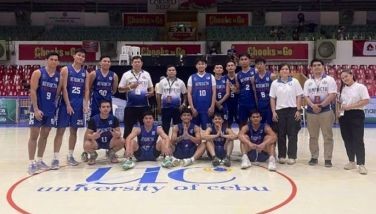The art of importing into the Philippines
Prior to shipping goods into the Philippines, a prospective business must initially ask four basic questions: what is the nature of the product intended for import, what rate of duty would apply to the product, what value would be declared for Customs purposes, and would the product intended for import qualify for preferential tariff rates under any free trade agreement? Having a clear answer to these questions may afford the importer and, to a certain extent, the exporter a degree of certainty and comfort in setting or managing up an import business.
Knowing the product
The first step is to fully understand the nature of the product intended for importation and vet it against the current rules and regulations to determine whether it is freely importable, subject to regulations, or prohibited. Commonly, food and animal products are subject to tight regulations in the Philippines - requiring a number of certifications from relevant government agencies (e.g., Department of Agriculture) to ensure that certain standards are met. Importers of animal products, for example, should first be issued veterinary quarantine clearances to certify that their sources are reputable and undergo safe processes. Certain industrial products too are covered by similar standards. Tires, construction materials, electrical equipment should first be inspected by the Bureau of Product Standards and issued an import commodity clearance before they are allowed entry into the Philippines. Among those items which are barred from being imported in the Philippines are weapons and gambling paraphernalia. Knowing the product is also important to ascertain if it should be subject to certain excise taxes. Excise taxes are imposed on automobiles, oil/petroleum and specific “sin” or “luxury” products (e.g., liquor, cigarettes) for which different specific rates are applied.
Once certainty is obtained that the product can be imported, and the requisite certifications are procured, then one can delve into the technical intricacies of importation.
Getting the right classification
The next consideration for an importer is to know the proper tariff classification of the product to determine the appropriate duty rate. Duty rates for imported products vary depending on the classification of your goods. Such a classification will take the form of an ASEAN Harmonized Tariff Nomenclature (AHTN) Code found in Section 104 of the Tariff and Customs Code. Each AHTN code has a corresponding duty rate. Since the descriptions found in the Section 104 are oftentimes complex, technical and voluminous, it may be a challenge to identify the correct tariff line for a product. There may be instances wherein a product could be ostensibly classified under more than one tariff line. To resolve these, the General Rules of Interpretation (GRI) of the Harmonized System under Section 103 of the Tariff and Customs Code are consulted. These are universally accepted rules (for all members of the World Customs Organization) which serve as a guide in finding the right tariff line for a particular product. Nonetheless, this may still require a thorough analysis of the product’s detailed technical descriptions in both a physical, functional and commercial sense. For better certainty, it is a recommended practice for first time importers to secure a tariff classification ruling from the Tariff Commission. The said ruling can be presented to Customs as a more definitive basis for the classification of your product.
Assessing the proper customs value
After doubts have been resolved on the classification of the product, the challenge would now be to establish the value to be declared to Customs. The Philippines follows the World Trade Organization (WTO) appraisement hierarchy under the WTO Agreement of Customs Valuation wherein the transaction value of the imported product (i.e., the price actually paid or payable when sold for export to the Philippines) is the principal mode of valuation. Note that this may include various post-importation remittances and price adjustments related to the imported goods such as royalties, license fees, proceeds from subsequent sales, and even costs of materials/molds for the manufacture of the product that are provided free of charge (assists). Conversely, this may exclude post-import charges that may have been clumped in the invoice (e.g., installation costs, inland transportation). Once the value is set, then the duty rate is applied and the customs duties payable can be obtained. On top of customs duties, a uniform 12 percent value-added tax (VAT) rate is applied based on its landed cost. Landed cost is the sum of the value of the imported goods, customs duties paid, excise taxes, and other post-importation charges (arrastre, wharfage, import processing fee, brokerage fees, etc.)
For a number of possible reasons, the transaction value may be rejected by Customs (on account of it being relatively low, the presence of a “no sale situation,” suspicions that price was influenced by a related party, etc.). When this happens, five other methods are sequentially applied namely: the transaction value of identical goods, the transaction value of similar goods, the computed value (analogous to “cost plus”), the deductive value (“selling price minus”), and the fall back value (any reasonable method consistent with the WTO Customs Valuation Agreement). For any doubts as to the acceptability of your transaction value or as to which method should be used and how to arrive at the proper customs value using that method, rulings may be sought in advance from Customs.
Realizing tariff savings
Finally, to realize duty savings, the importer may wish to leverage possible preferential tariffs on its importations. The Philippines is currently party to a number of regional free trade agreements (ASEAN Free Trade Agreement, ASEAN-China Free Trade Agreement, ASEAN-Korea Free Trade Agreement, ASEAN-India Free Trade Agreement), and is set to implement its first bilateral free trade agreement with Japan (the Japan Philippine Economic Partnership Agreement) in the near future. These agreements provide preferential tariff rates for certain products imported from participating countries subject to certain criteria known as the rules of origin. Generally, there are three types of criteria to establish a product’s origin: the value-added percentage (in the case of ASEAN, 40 percent of a product’s Free-on-Board Value should originate from an ASEAN country), the change in tariff classification (where a product should have been processed sufficiently such that its tariff heading shifts by the time it is exported), and the specific process (where a product should have undergone a particular type of manufacturing process). These rules are oftentimes used in combination with each other and may apply differently for each product. An imported product’s compliance with these rules and its qualification for preferential tariff treatment is validated by a certificate of origin issued by the designated government agency at the country of origin. Certificates of origin for exports from the Philippines are issued by the Bureau of Customs.
External assistance recommended
The diversity of rules having an impact on import transactions presents companies with both challenges and opportunities. The importance of ensuring compliance with all regulations above is underscored by the fact that all import transactions dating back to as far back as three years are subject to audit by Philippine Customs. Thus, companies will have to undertake the necessary precautions to ensure that records of all import transactions are properly maintained, and a competent and accountable broker is enlisted. Nonetheless, owing to the complexities and technical intricacies involved, it is always a sound practice for companies to consult professionals in the field to help them navigate through the rules, and know the most viable courses of action to mitigate costs and protect their bottomlines.
(Raphael B. Madarang is a Manager for Business and Financial Advisory Services of Manabat Sanagustin & Co., CPAs, a member firm of KPMG network of independent member firms affiliated with KPMG International, a Swiss cooperative. This article is for general information only and is not intended to be, nor is it a substitute for, informed professional advice. While due care was exercised to ensure the quality of the information contained in this article, readers should carefully evaluate its accuracy, completeness and relevance for their purposes, and should obtain any appropriate professional advice relevant to their particular circumstances. For comments or inquiries, please email [email protected] or [email protected]).
- Latest
- Trending






























